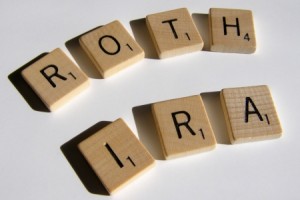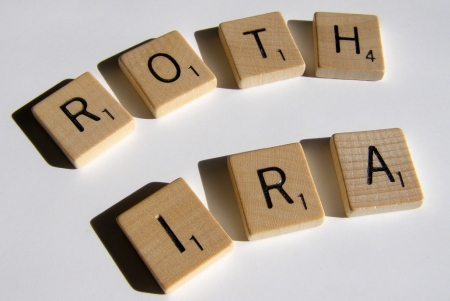By Terry Coxon, Casey Research
It’s clear to me, even though it may not be clear to you, that unless there is something very unusual about your situation, if you have a traditional IRA, you should pay the tax now and convert it to a Roth IRA. Not just maybe, but definitely. Not just for a small advantage but for a big one. If you don’t convert today, you’ll ultimately surrender much more to the tax collector. You’ll be throwing money away. And you’ll keep throwing it away. It’s a result neither of us wants.
Your IRA is an object in motion, with money going in and out of it and investments turning over inside of it. It lives not just on your brokerage statement but across the years of your calendar as well. That’s why the Roth conversion question can seem so tangled. Because of the time dimension, deciding whether to convert isn’t as simple as deciding whether to replace one stock with another. But there is, as I’ll try to show, a way to look at the question that cuts through the complexity.
Comparisons

With a Roth IRA, if your income isn’t too high, you may contribute up to the same $5,000 or $6,000 per year, but none of it is tax deductible. Just as with a traditional IRA, earnings inside the Roth accumulate and compound free of current tax. When the money comes out, assuming you are at least 59.5 years old and the IRA is at least five years old, the money goes tax free straight to your pocket.
Whether traditional or Roth, any IRA’s power to make you richer comes from tax-deferred compounding. Consider a simple example that compares an ordinary, taxable savings account with a traditional IRA. Assume, for the sake of simplicity, that:
- An individual is willing to forgo $1,000 of current spending.
- He’s putting money away for 30 years.
- His income tax bracket (federal and state) during the 30-year period is a constant 40%.
- The before-tax rate of return is a constant 5% per year.
The ordinary savings account starts with $1,000, the amount of current spending the investor is willing to forgo. Given a 40% tax bracket, the earnings compound at an after-tax rate of 3%, so at the end of 30 years, the investor has $2,427 in spendable cash.
The traditional IRA starts with $1,666.67, since, given the tax deduction and a 40% tax rate, that’s the amount that entails forgoing $1,000 of current spending. The earnings will compound at a tax-deferred rate of 5%, so at the end of the 30 years there is $7,203 in the traditional IRA. When the investor withdraws the entire amount and gives up 40% in tax, he’s left with $4,322 in spendable cash – 78% more than if he hadn’t used the IRA.
How does a Roth IRA stack up against a traditional IRA? Redo the calculations for a Roth and you find the same result, to the penny. The Roth starts with $1,000. The earnings grow at a tax-free rate of 5%, so at the end of the 30 years, there is $4,322 in the Roth IRA. And since withdrawals from a Roth can be tax free, it’s all spendable cash.
There is a fourth possibility, which I’ll call a “Lame IRA.” A Lame IRA is a traditional IRA that has been funded with contributions that were non-deductible because the owner’s income was too high. Like the Roth, it starts with $1,000, and at the end of the 30 years the balance is $4,322. But of that amount, $3,322 is taxable when it is withdrawn. After paying tax, the owner is left with just $2,992 in spendable cash. This is the weakest outcome for an IRA, but it still beats an ordinary savings account.
The Free Hand You Don’t Have
A 78% improvement in wealth accomplished with a traditional IRA is a big payoff for filling out a few papers. So if you had a free hand – meaning if there were no contribution limits – how much of your income and assets should you put into a traditional IRA?
Part of the answer is easy: any interest-earning dollar assets (cash, money market funds, T-bills, taxable bonds, etc.) that are part of your overall portfolio should go into the IRA. In your hands, the interest they earn is heavily taxed. Inside the IRA, the interest is tax-deferred. The ideal IRA would be at least big enough to hold all your interest-earning dollar assets.
The same goes for any part of your portfolio that you plan on devoting to short-term trading – trades that you expect to last for less than one year and hence would generate short-term capital gains. Unless you have an unhappy inventory of capital losses, your short-term capital gains will be taxed at the same rate as ordinary income, and they’ll be taxed currently – unless they happen inside your IRA. So your ideal IRA would be big enough to hold all your short-term trades as well.
Longer-term positions are a different matter. Unless your traditional IRA has a long life ahead of it (at least 20 years), you shouldn’t expand the IRA to make room for stocks you are holding for more than one year. Putting those stocks into the IRA risks a reverse alchemy – converting lightly taxed long-term gains into ordinary income.
What about gold? The top federal tax rate on gold profits is 28%, which, depending on your state, gets the bill to, perhaps, 34%. In any case, the rate is less than the ordinary income rate you pay when profits come out of a traditional IRA. So if you are planning to liquidate a traditional IRA within the next few years, it’s not the place to hold gold. But if your IRA is going to stay in business for another decade or longer, you likely will be selling much of the gold and reinvesting in something else, including interest-earning assets and perhaps short-term trades. In that case, yes, the ideal size for a traditional IRA would be big enough to hold most of the gold that is part of your overall portfolio.
So, in general, moving your directly owned assets into a traditional IRA would be to your advantage. But there are limits. Moving assets whose return is taxed lightly could be a mistake.
With a Roth IRA, however, the picture is much simpler. Ideally, if it were possible, all your investments should be wrapped up in a Roth, for zero tax when profits are earned and zero tax when profits are paid out to you. Of course, that ideal isn’t available, but it demonstrates that with a Roth IRA, bigger is unambiguously better. And that gets us closer to answering the Roth conversion question.
Deconstructing a Traditional IRA
Again assume, for the sake of simplicity, that you face a constant tax rate of 40% far into the future. Regardless of how wonderfully profitable the investments in your traditional IRA turn out to be (or how disappointing), and no matter how long the money stays in the IRA, 40 cents of every dollar that comes out will be lost to taxes. You’ll only get the 60 cents to spend. In other words, your traditional IRA is in fact a 60/40 partnership between you and the government.
Now take a close look at your 60% share, which is all you really own. Its returns are free of current tax. And when the partnership liquidates (when money comes out of the IRA), you’ll collect your 60% share tax free. Sound familiar? Your 60% share of a traditional IRA is indistinguishable from a Roth IRA. It is a virtual Roth. And the other 40% isn’t yours at all.
|
Traditional IRA |
|
| Government’s share = 40% | Your Virtual Roth IRA = 60% |

